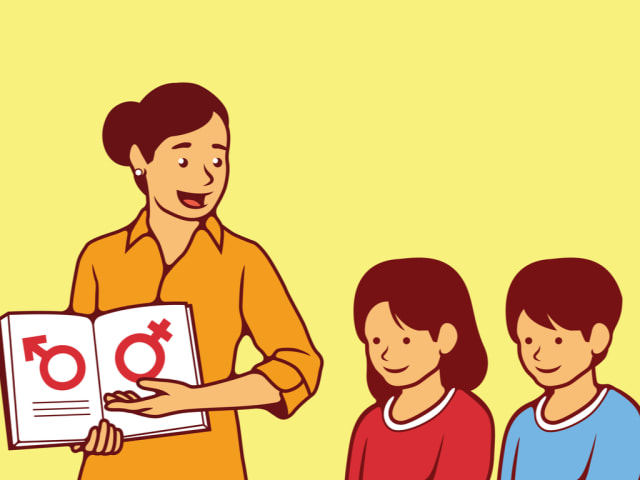UNAIR NEWS – Sexuality education for children is often considered a taboo subject. However, sexuality education is an important thing that must be taught to children, although there are no certain age limitations when to start teaching them.
According to Universitas Airlangga (UNAIR) Psychology Expert, Dr. Primatia Yogi Wulandari, M.Si., five indicators can be used as a guide for parents to start teaching sexuality education to their children, the emerging questions about pregnancy or birth, beginning to make friends with the opposite sex, socializing with the environment outside the nuclear family, having access to extensive information, and practicing self-cleaning when defecating.
“Keep in mind, the problem of sexual behavior is only part of sexuality education. We can teach them that men and women have different body organs, maintain personal hygiene, including genitals, interaction with the opposite sex, and roles of men and women,” explained Mima on Wednesday, July 21, 2021.
Mima explained that sexuality education must be carried out continuously and not incidentally because the principle is to optimize children’s learning processes and encourage positive development, especially regarding sexuality issues. In teaching sexuality education, parents need to pay attention to several aspects of the material and strategies used.
Children still think concretely
Children’s mindsets make parents have to use language and explanations that are simple and easy for children to understand. Parents are not advised to use particular words for the genitals. Children should be introduced to the genitals’ term in a neutral manner without shame or disgust. The children are expected to consider the genitals same as other body parts but are still treated specially because they are more private and intimate.
Child age
The age of the child is a consideration regarding the detailed information provided.
“In early childhood, the information provided should not be detailed. For example, when explaining the process of pregnancy. It can be explained that the father has sperm that will fertilize the mother’s egg,“ said Mima.
Methods according to children’s interests
The material provided can be presented in a method based on the child’s interests, such as through stories.
Furthermore, Mima said that information about sexuality education must be instilled and understood by children and then applied in everyday life.
“Some things that can be done include parents’ open and positive responses to children when they ask about sexuality education. Strengthen the emotional bond between children and parents so children can discuss without embarrassment. Then, parents can discuss sexuality issues from various aspects of development, such as cognitive, physical, and socio-emotional development,” she explained.
She also said that educational institutions could start thinking about providing comprehensive and continuous sexuality education. Some ways that can be done are incorporating sexuality education into the curriculum, inviting resource persons engaged in sexuality education for children and parents, counseling guidance programs, providing reliable sources of information for children.
“We can use certain strategies, for example, by facilitating a box where children can enter questions about things they want to know about sexuality, to be followed up with explanations in class,” she concluded. (*)
Author: Alysa Intan Santika
Editor: Nuri Hermawan





